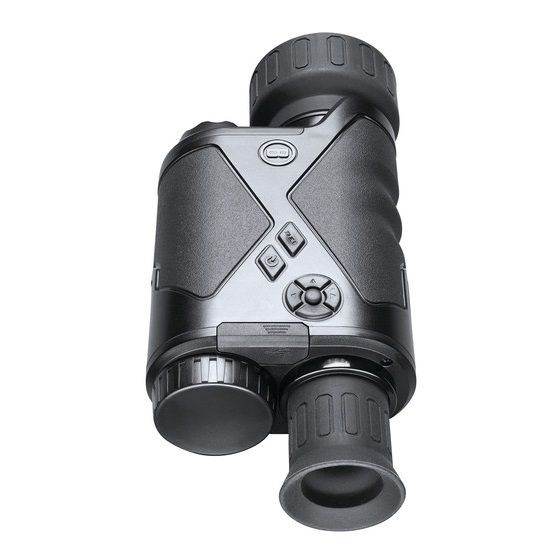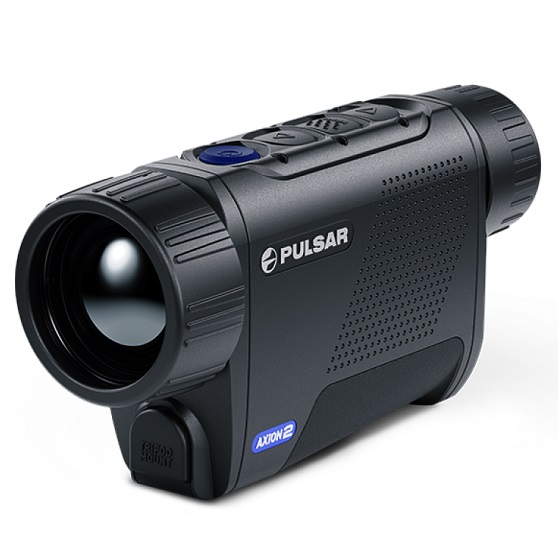
Types of Night Vision

When it comes to deciding which type of night vision device to get, it can be quite confusing. While both ultimately share the same goal of providing vision at night, their technology makes them very distinct from one another.
Image intensifiers
- NVDs that use image intensifiers require a small amount of ambient light to operate.
- For hunting or patrol, light from the moon and stars is sufficient enough.
- For tactical situations, image intensifiers are commonly used since they can provide a detailed image of the surrounding environment even at a distance.
- The start-up time for image intensifiers is relatively short and ready to be used instantly at any time.
- Usage in a dark and closed-off environment such as a cave or building without ambient light will not yield viewable images.
- Conditions such as fog or cloud also reduce the effectiveness of image intensifiers.
- Due to the dependency on ambient light, some devices come equipped with an IR illuminator to improve visibility.
- Infrared light from the IR illuminator can be seen by other people with NVDs which gives away your position.
- Bright light renders image intensifiers-based NVDs useless and can even damage them. However, the latest generation has minimized this risk, as they are equipped with a “gate” mechanism that shuts off the device when exposed to bright light.
Thermal Imaging
- A thermal imager relies on heat generated by surrounding objects to operate instead of ambient light.
- It produces an image by translating the heat intensity emitted by an object into a shaded image (thermogram).
- When hunting, a thermal imager can help detect animals hiding behind plants or in shadow.
- Coldblooded animals are harder to detect with a thermal imager.
- In tactical situations, thermal imagers are favoured for their detection capability while maintaining stealth (since they do not emit any infrared light).
- The image produced by a thermal imager lacks detail, making it difficult to identify a friend or foe.
- Thermal imagers work extremely well even in smoke and heavy debris making them useful for firefighters.
- Unlike light intensifiers, a thermal imager can also be used during the day for surveillance.
- Some companies also use thermal imagers as a way to detect any heat cracks in buildings for energy audits to save on cooling and heating costs.
Which One To Get?
As you can see, deciding between an image intensifier and a thermal imaging device is not as simple as you might have expected. However, there are a few criteria that we can use to simplify this process.
Price
When it comes to pricing, an image intensifier NVD is cheaper than a thermal imager. You can get a good quality image intensifier NVD for a few hundred dollars. Thermal imagers can cost thousands of dollars.
Lighting Condition and Environment
Before deciding on your purchase, you need to re-evaluate the lighting conditions and environment that you will be in when using the night vision device. Keep in mind that image intensifiers require ambient light to work unless they have an IR illuminator equipped. During the day, image intensifier NVDs cannot be used at all. While thermal imagers can work under any lighting conditions, the images they produce are much less detailed, making identification less effective in critical situations.
Additional uses
If you’re only planning to use the night vision devices at night in open areas with ambient light, an image intensifier NVD is more than sufficient. In very dark areas with lots of foliage, a thermal imaging device is the way to go since they can be used either day or night and even in smokes and debris.
Q&A on Night Vision / Thermal
Q. Why is it better to have lower NETD, however isn't it good to have higher sensitivity to temp change?
A. NETD stands for Noise Equivalent Temperature Difference. The smaller the value, the more minute differences in temperature a sensor can detect. Think of it as temperature resolving power in mK. The lower the NETD, the better it can discern smaller differences in temperature.
Q. How do thermal devices work during day time?
A. The thermal sensor needs to be calibrated for a higher ambient temperature. Most thermal scopes have auto and manual calibration options, and they can work during the day.
Q. What makes Thermal expensive?
A. The sensitivity of the sensor and the sensor resolution, along with other features of the individual devices.
Q. If these scopes do not have IR sensor how do they detect temperature?
A. Thermal sensors detect the IR spectrum that is heat, radiating from objects and organisms.
Q. If night vision devices detect objects at night, why do they not perform well in pitch black environment?
A. Thermal devices can work in pitch black, but only detect heat, so they don't produce a detailed image, just a silhouette. Digital NV devices that have near IR sensors detect the light spectrum of IR, and require direct or ambient IR light. They cannot work in pitch black, but with some illumination, they produce a detailed monochrome image.


